Short note: This website is in Beta - we are currently building everything up but you can already find the apps to download and participate! Thank you and stay safe!
Information
Rainfall at a certain location is measured with a rain gauge. At the station, the rain gauge is mounted on the right side of the info board (see example below).
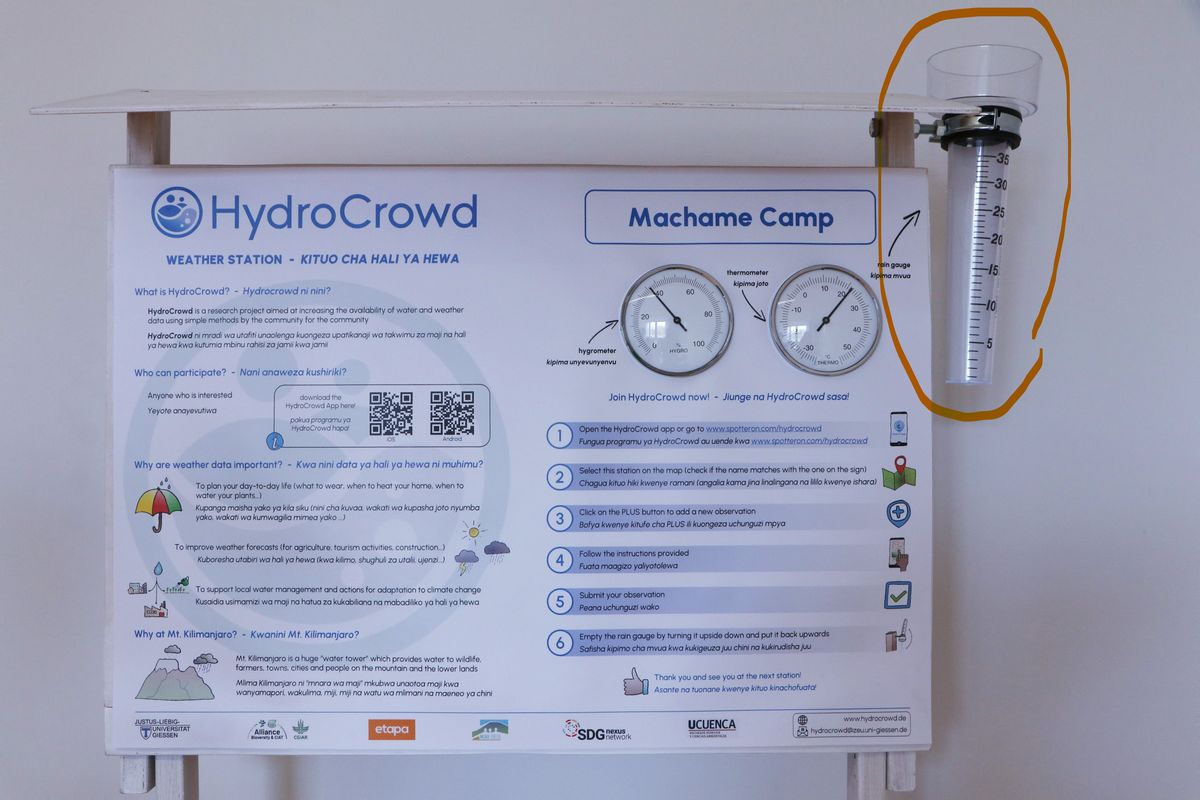
Rainfall is measured in millimeters (mm). The scale on the side of the rain gauge indicates how much rain fell since the last time the rain gauge was emptied. The scale is divided into intervals of 1 mm (short marks) and 5 mm (long marks). Look at the water in the rain gauge. Position yourself, such that your eyes are at the same height as the water level in the rain gauge (see example below).
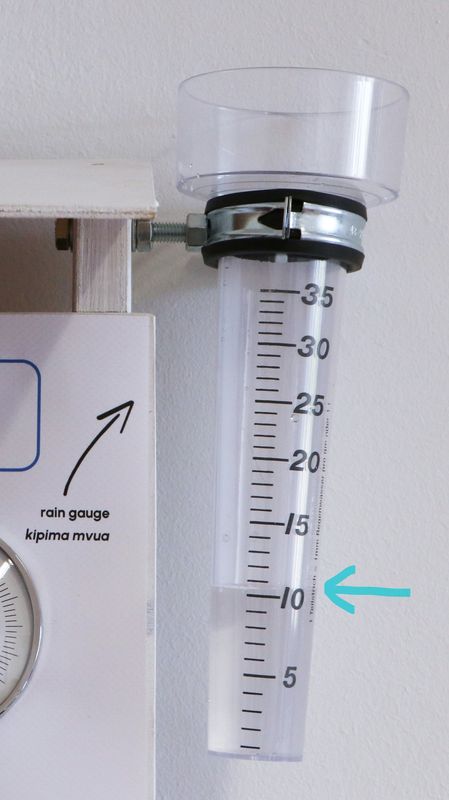
The mark closest to the water level in the rain gauge is the amount of rainfall. In the example above the rainfall is 10 mm. After submitting your rainfall measurement, don't forget to empty the rain gauge by turning it upside down and afterward turning it back with the inlet facing toward the sky (like it is in the first image).
¿Cómo medir la cantidad de lluvia?
La lluvia que cae en un lugar determinado se mide con un pluviómetro. En la estación, el pluviómetro está montado a la derecha del panel informativo ( ver ejemplo más abajo).

La lluvia o precipitación se mide en milímetros (mm). La escala situada en un lado del pluviómetro indica la cantidad de lluvia caída desde la última vez que se vació el pluviómetro. La escala está dividida en intervalos de 1 mm (marcas cortas) y 5 mm (marcas largas). Mire el agua del pluviómetro. Colóquese de manera que sus ojos estén a la misma altura que el nivel de agua del pluviómetro (ver ejemplo a continuación).

La marca más cercana al nivel del agua en el pluviómetro es la cantidad de lluvia. En el ejemplo anterior, la lluvia es de 10 mm. Después de enviar la medición de la lluvia, no olvide vaciar el pluviómetro volcándolo boca abajo y volviéndolo a poner boca arriba con la entrada mirando hacia el cielo (como en la primera imagen).
Kipimajoto hupima joto la hewa mahali fulani. Kipimajoto katika kituo hiki hupima joto kutoka -35 hadi 55 digrii Selsiasi (°C) (tazama mfano hapa chini).
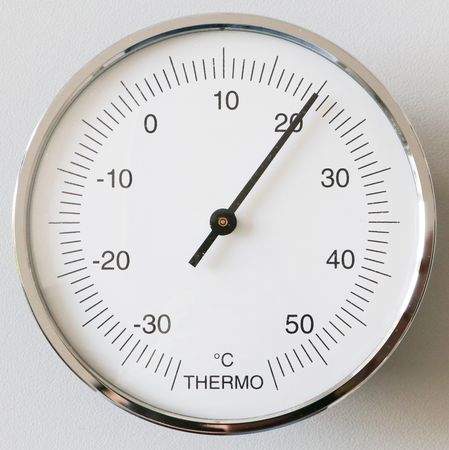
Wakati hali ya joto ni hasi (chini ya 0 °) ni kufungia. Kiwango kwenye thermometer imegawanywa katika vipindi vya 1 ° C (alama fupi) na 5 ° C (alama ndefu). Alama iliyo karibu na pointer ni halijoto ya sasa. Katika mfano juu ya joto ni 20 ° C.
The thermometer measures the air temperature at a certain location. The thermometer at this station measures temperatures from -35 to 55 degrees Celsius (°C) (see example below).

When the temperature is negative (below 0°) it is freezing. The scale on the thermometer is divided into intervals of 1°C (short marks) and 5°C (long marks). The mark closest to the pointer is the current temperature. In the example above the temperature is 20°C.
El termómetro mide la temperatura del aire en un lugar determinado. El termómetro de esta estación mide la temperatura entre -35 y 55 grados Celsius (°C) ( ver ejemplo a continuación).

Cuando la temperatura es negativa (por debajo de 0°) está helando. La escala del termómetro está dividida en intervalos de 1°C (marcas cortas) y 5°C (marcas largas). La marca más cercana a la aguja es la temperatura actual. En el ejemplo anterior, la temperatura es de 20 °C.
El higrómetro ( ver ejemplo más abajo) mide el grado de humedad del aire en un lugar determinado. También se denomina humedad relativa.
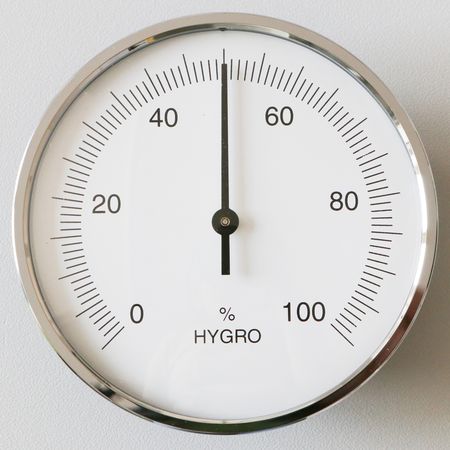
Puede medir la humedad desde el 0% (completamente seco) hasta el 100% (muy húmedo). La escala del higrómetro está dividida en intervalos del 1% (marcas cortas) y del 5% (marcas largas). La marca más cercana a la aguja es la humedad actual. En el ejemplo anterior, la humedad es de 50%.
Kipimo cha kupima unyevunyevu (tazama mfano hapa chini) hupima jinsi hewa ilivyo na unyevunyevu katika eneo fulani. Hii pia inaitwa unyevu wa kwa kulinganishwa.

Inaweza kupima unyevunyevu kwenye hewa kutoka 0% (kavu kabisa) hadi 100% (yenye unyevu sana). alama kwenye kipima unyevunyevu zimegawanywa katika vipindi vya 1% (alama fupi) na 5% (alama ndefu). Alama iliyo karibu na mshale ni unyevunyevu wa sasa. Katika mfano hapo juu unyevu ni 50%.
The hygrometer (see example below) measures how moist the air is at a certain location. This is also called relative humidity.

It can measure the humudity from 0 % (completly dry) to 100% (very humid). The scale on the hygrometer is divided into intervals of 1% (short marks) and 5% (long marks). The mark closest to the pointer is the current humidity. In the example above the humidity is 50%.
Unaweza kuchagua kati ya aina nne tofauti za vituo:
- Kituo cha hali ya hewa: Katika kituo hiki, unaweza kupima vipengele tofauti vya hali ya hewa kama vile mvua, halijoto na unyevunyevu. Hii inaweza tu kufanywa katika vituo vilivyopo vya HydroCrowd.
- Kituo cha maji: Katika kituo hiki, unaweza kupima kiwango cha maji na topetope kwenye maji ya mto. Hii inaweza tu kufanywa katika vituo vilivyopo vya HydroCrowd.
- Hali ya hewa @ Nyumbani: Unda kituo chako mwenyewe na utoe maelezo ya hali ya hewa kutoka kwenye kipimo cha mvua nyumbani kwako.
- Dokezo Picha: Pakia picha ya hali ya hewa au uchunguzi wa maji kutoka eneo lolote unalopenda.
You can choose between four different station types:
- Weather station: At this station, you can measure of different weather variables like rainfall, air temperature, humidity, and wind. This can only be done at existing HydroCrowd stations.
- Water station: At this station, you can measure the water level and turbidity of the river water. This can only be done at existing HydroCrowd stations.
- Weather@Home: Create your own spot and provide weather information from your rain gauge at home.
- Photo Note: Upload a photo of a weather or water observation from any location you like."
Puede elegir entre cuatro tipos de estación diferentes:
Estación meteorológica: En esta estación se pueden medir diferentes variables meteorológicas como precipitación, temperatura del aire y humedad. Esto sólo se puede hacer en las estaciones ya existentes de HydroCrowd.
Estación hidrológica: En esta estación se puede medir el nivel del agua y la turbiedad del agua del río. Esto sólo se puede hacer en las estaciones ya existentes de HydroCrowd.
Tiempo en Casa: Cree su propio punto y proporcione información meteorológica de su pluviómetro en casa.
Foto Nota: Suba una foto de una observación meteorológica o hidrológica desde el punto que desee.
Texture by Feel
You can analyze the texture of soil with just your hands. This helps with classifying the kind of soil you are observing. There are 3 types of soil structures: sand, silt and clay.
How to analyse soil texture by feel
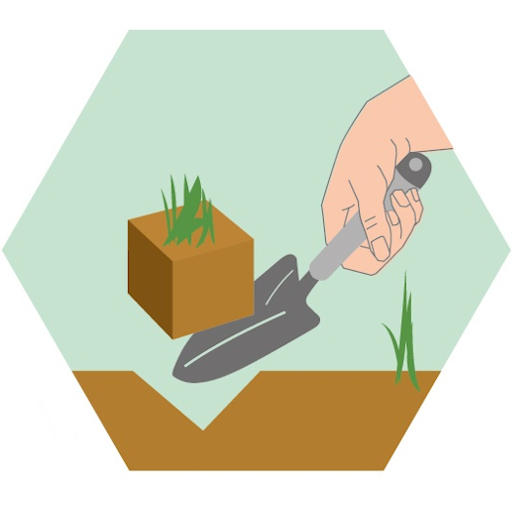 First, take a soil sample. For this, you need a hand shovel with which you can excavate the soil down to 10 cm.
First, take a soil sample. For this, you need a hand shovel with which you can excavate the soil down to 10 cm.
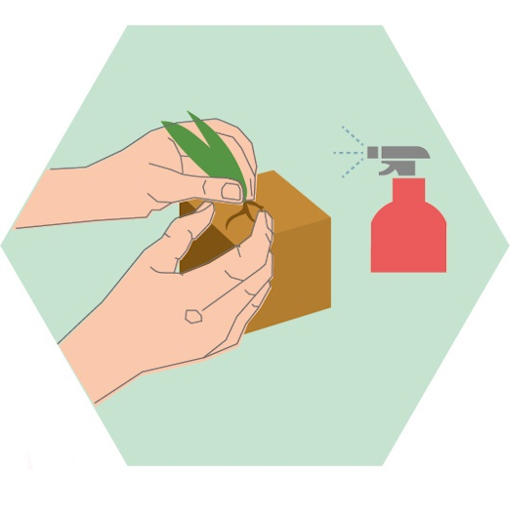 Afterwards it is necessary to prepare your sample. You should remove plants, roots and stones from the soil sample. If the soil is too dry, it must be sprayed with water. If it is too wet, dry soil must be added.
Afterwards it is necessary to prepare your sample. You should remove plants, roots and stones from the soil sample. If the soil is too dry, it must be sprayed with water. If it is too wet, dry soil must be added.
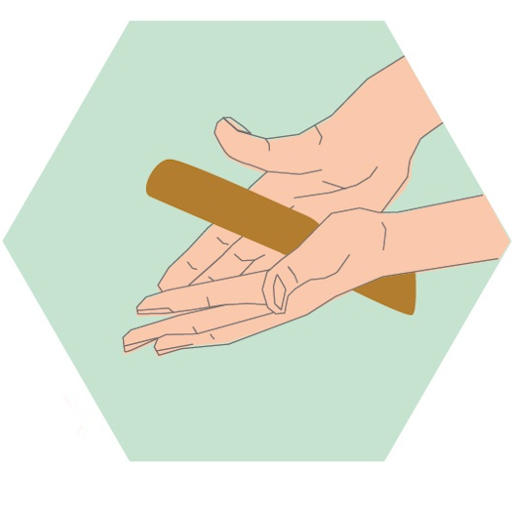 Then, the soil must be rolled between the palms of your hands until it has a shape similar to a sausage.
Then, the soil must be rolled between the palms of your hands until it has a shape similar to a sausage.
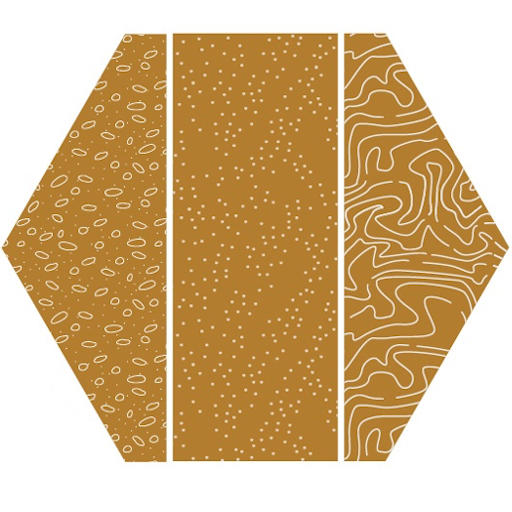 Now the soil must be examined. Is the soil...
Now the soil must be examined. Is the soil...
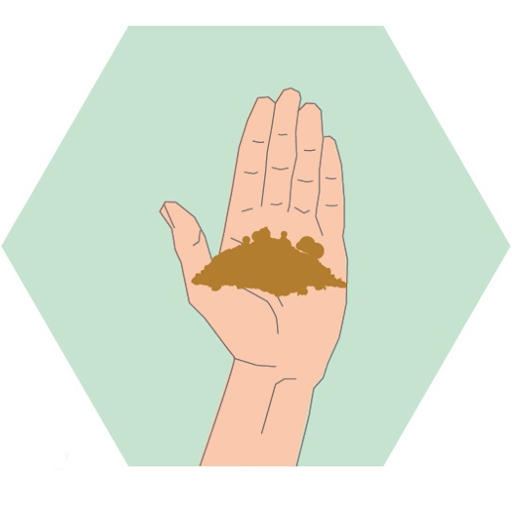 a....sandy? - a light soil that falls apart on the hand because it is very crumbly.
a....sandy? - a light soil that falls apart on the hand because it is very crumbly.
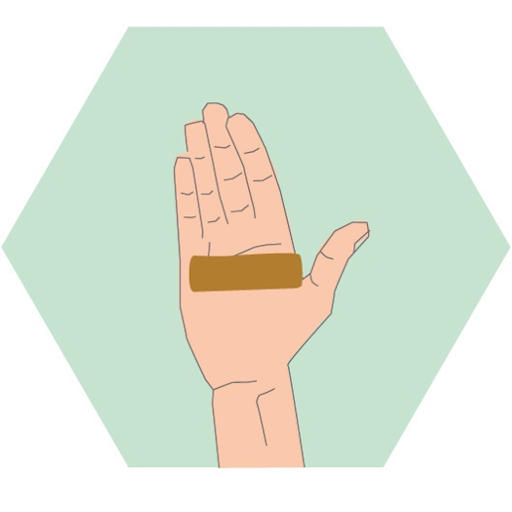 b. ... silty? - a medium-heavy soil that can be rolled into a short thick sausage.
b. ... silty? - a medium-heavy soil that can be rolled into a short thick sausage.
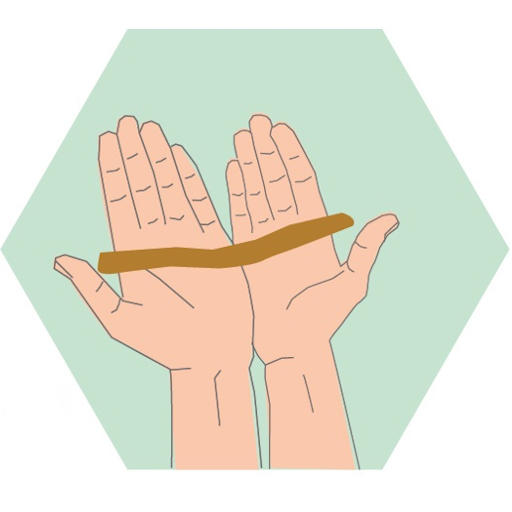 c.... clayey? - a heavy soil that can be formed into a long thin sausage.
c.... clayey? - a heavy soil that can be formed into a long thin sausage.
Lõimis katsudes
Mulla lõimist saate analüüsida vaid oma kätega. See aitab klassifitseerida vaadeldava mulla tüüpi. Mulla lõimiseklasse on 3 tüüpi: liiv, tolm ja savi.
Kuidas analüüsida mulla lõimist katsudes
 Kõigepealt võtke mullaproov. Selleks on vaja käsikühvlit, millega saab kuni 10 cm mulda välja kaevata.
Kõigepealt võtke mullaproov. Selleks on vaja käsikühvlit, millega saab kuni 10 cm mulda välja kaevata.
 Pärast seda on vaja proov ette valmistada. Mullaproovist tuleks eemaldada taimed, juured ja kivid. Kui muld on liiga kuiv, tuleb seda veega piserdada. Kui see on liiga märg, tuleb lisada kuiva mulda.
Pärast seda on vaja proov ette valmistada. Mullaproovist tuleks eemaldada taimed, juured ja kivid. Kui muld on liiga kuiv, tuleb seda veega piserdada. Kui see on liiga märg, tuleb lisada kuiva mulda.
 Seejärel tuleb mulda peopesade vahel rullida, kuni see on vorsti sarnase kujuga.
Seejärel tuleb mulda peopesade vahel rullida, kuni see on vorsti sarnase kujuga.
 Nüüd tuleb muld üle vaadata. Kas muld...
Nüüd tuleb muld üle vaadata. Kas muld...
 a....liivane? - kerge muld, mis vajub käe peale laiali, sest on väga murenev.
a....liivane? - kerge muld, mis vajub käe peale laiali, sest on väga murenev.
 b. ... tolmjas? - keskmise raskusega muld, mida saab rullida lühikeseks paksuks vorstiks.
b. ... tolmjas? - keskmise raskusega muld, mida saab rullida lühikeseks paksuks vorstiks.
 c.... savine? - raske muld, millest saab pika õhukese vorsti vormida.
c.... savine? - raske muld, millest saab pika õhukese vorsti vormida.
Texture au toucher
Vous pouvez analyser la texture du sol à la main. Cela peut aider à classer le sol observé. Il existe 3 types de sol : sableux, limoneux et argileux.
Comment analyser la texture du sol au toucher
 Prélevez d’abord un échantillon de sol. Pour ce faire, utilisez une pelle pour excaver du sol à une profondeur de 10 cm.
Prélevez d’abord un échantillon de sol. Pour ce faire, utilisez une pelle pour excaver du sol à une profondeur de 10 cm.
 Ensuite, il est nécessaire de préparer votre échantillon. Retirez les plantes, les racines et les cailloux. Si le sol est trop sec, arrosez-le. S’il est trop humide, ajoutez-y du sol sec.
Ensuite, il est nécessaire de préparer votre échantillon. Retirez les plantes, les racines et les cailloux. Si le sol est trop sec, arrosez-le. S’il est trop humide, ajoutez-y du sol sec.
 Puis faites rouler le sol entre les paumes de vos mains pour obtenir une sorte de boudin.
Puis faites rouler le sol entre les paumes de vos mains pour obtenir une sorte de boudin.
 Vous pouvez maintenant l’examiner. Le sol est-il...
Vous pouvez maintenant l’examiner. Le sol est-il...
 a....sableux ? – un sol léger qui se désagrège dans la main car il est très friable.
a....sableux ? – un sol léger qui se désagrège dans la main car il est très friable.
 b. ... limoneux ? – un sol moyennement compact qui peut être roulé en un petit boudin épais..
b. ... limoneux ? – un sol moyennement compact qui peut être roulé en un petit boudin épais..
 c.... argileux ? – un sol lourd, compact qui peut être roulé en un long boudin très fin.
c.... argileux ? – un sol lourd, compact qui peut être roulé en un long boudin très fin.
Textura por tacto
Puede analizar la textura del suelo tan solo con sus manos. Esto ayuda a clasificar el tipo de suelo que está observando. Hay 3 tipos de textura: arena, limo y arcilla.
Cómo analizar la textura por tacto
 Primero, coja la muestra de suelo. Para esto se necesita una pala de mano para excavar el suelo hasta 10 cm.
Primero, coja la muestra de suelo. Para esto se necesita una pala de mano para excavar el suelo hasta 10 cm.
 Después es necesario preparar su muestra. Debe eliminar plantas, raíces y piedras de la muestra. Si el suelo está muy seco debe ser rociado con agua. Si está muy húmedo se debe añadir suelo seco.
Después es necesario preparar su muestra. Debe eliminar plantas, raíces y piedras de la muestra. Si el suelo está muy seco debe ser rociado con agua. Si está muy húmedo se debe añadir suelo seco.
 Luego, el suelo se debe enrollar entre las palmas de las manos hasta que el suelo tenga forma similar a un churro.
Luego, el suelo se debe enrollar entre las palmas de las manos hasta que el suelo tenga forma similar a un churro.
 Ahora el suelo puede ser examinado. El suelo es...
Ahora el suelo puede ser examinado. El suelo es...
 a....arenoso? - un suelo ligero que se deshace en la mano porque se desmorona mucho.
a....arenoso? - un suelo ligero que se deshace en la mano porque se desmorona mucho.
 b. ... limoso? - un suelo medio pesado que se puede enrollar en forma de churro corto y grueso.
b. ... limoso? - un suelo medio pesado que se puede enrollar en forma de churro corto y grueso.
 c.... clayey? - un suelo pesado que puede formar un churro largo y delgado.
c.... clayey? - un suelo pesado que puede formar un churro largo y delgado.
Textuur op gevoel
Je kunt de textuur van grond analyseren met je handen. Dit helpt bij het classificeren van het soort grond dat je waarneemt. Er zijn 3 soorten bodemstructuren: zand, silt en klei.
Hoe analyseert u de bodemtextuur door te voelen
 Neem eerst een grondmonster. Hiervoor hebt u een handschep nodig waarmee u de grond tot op 10 cm kunt uitgraven.
Neem eerst een grondmonster. Hiervoor hebt u een handschep nodig waarmee u de grond tot op 10 cm kunt uitgraven.
 Daarna is het nodig om uw monster voor te bereiden. U moet planten, wortels en stenen uit het grondmonster verwijderen. Als de grond te droog is, moet hij met water worden besproeid. Als de grond te nat is, moet er droge grond aan worden toegevoegd.
Daarna is het nodig om uw monster voor te bereiden. U moet planten, wortels en stenen uit het grondmonster verwijderen. Als de grond te droog is, moet hij met water worden besproeid. Als de grond te nat is, moet er droge grond aan worden toegevoegd.
 Vervolgens wordt de grond tussen de handpalmen gerold tot hij de vorm van een worst heeft.
Vervolgens wordt de grond tussen de handpalmen gerold tot hij de vorm van een worst heeft.
 Nu moet de grond worden onderzocht. Is de grond...
Nu moet de grond worden onderzocht. Is de grond...
 a....zanderig? - een lichte grond die op de hand uit elkaar valt omdat hij erg brokkelig is.
a....zanderig? - een lichte grond die op de hand uit elkaar valt omdat hij erg brokkelig is.
 b. ... siltig? - een middelzware grond die tot een korte dikke worst kan worden opgerold.
b. ... siltig? - een middelzware grond die tot een korte dikke worst kan worden opgerold.
 c.... kleiig? - een zware grond die tot een lange dunne worst kan worden gevormd.
c.... kleiig? - een zware grond die tot een lange dunne worst kan worden gevormd.
Tessitura al tatto
Potete analizzare la tessitura del suolo semplicemente con le mani. Questo aiuta la classificazione del tipo di suolo che state osservando. Ci sono tre tipi di strutture di suolo: sabbiosa, limosa e argillosa.
Come analizzare la tessitura del suolo al tatto
 Per prima cosa, prendete un campione di suolo. Per fare questo, avrete bisogno di una piccola vanga con la quale potrete scavare il suolo fino alla profondità di 10 cm.
Per prima cosa, prendete un campione di suolo. Per fare questo, avrete bisogno di una piccola vanga con la quale potrete scavare il suolo fino alla profondità di 10 cm.
 Successivamente è necessario preparare il vostro campione di suolo. Dovreste rimuovere il materiale vegetale, radici e sassi dal campione di suolo. Se il suolo è troppo secco, deve essere spruzzato con acqua. Se il suolo è troppo umido, bisogna aggiungere suolo secco.
Successivamente è necessario preparare il vostro campione di suolo. Dovreste rimuovere il materiale vegetale, radici e sassi dal campione di suolo. Se il suolo è troppo secco, deve essere spruzzato con acqua. Se il suolo è troppo umido, bisogna aggiungere suolo secco.
 Successivamente, il suolo deve essere arrotolato fra i palmi delle vostre mani fino a quando assume una forma simile a quella di una salsiccia.
Successivamente, il suolo deve essere arrotolato fra i palmi delle vostre mani fino a quando assume una forma simile a quella di una salsiccia.
 Ora il suolo deve essere esaminato. Il suolo è..
Ora il suolo deve essere esaminato. Il suolo è..
 a....sabbioso? - un suolo leggero che si disgrega nelle mani perché è molto sbriciolato.
a....sabbioso? - un suolo leggero che si disgrega nelle mani perché è molto sbriciolato.
 b. ... limoso? - un suolo medio- pesante che può essere modellato in una salsiccia corta e spessa.
b. ... limoso? - un suolo medio- pesante che può essere modellato in una salsiccia corta e spessa.
 c.... argilloso? - un suolo pesante che può essere modellato in una salsiccia sottile e lunga.
c.... argilloso? - un suolo pesante che può essere modellato in una salsiccia sottile e lunga.
Υφή μέσω της αφής
Μπορείτε να αναλύσετε την υφή του εδάφους με τα γυμνά σας χέρια. Αυτό βοηθάει να κατηγοριοποιηθεί το είδος του εδάφους που παρατηρείτε. Υπάρχουν 3 τύποι εδαφικών δομών: άμμος, λάσπη και πηλός.
Πώς αναλύεται η υφή του εδάφους μέσω της αφής
 Πρώτα, παίρνετε ένα δείγμα εδάφους. Για αυτό απαιτείται ένα φτυάρι χειρός με το οποίο μπορείτε να σκάψετε ως τα 10 cm.
Πρώτα, παίρνετε ένα δείγμα εδάφους. Για αυτό απαιτείται ένα φτυάρι χειρός με το οποίο μπορείτε να σκάψετε ως τα 10 cm.
 Στη συνέχεια πρέπει να προετοιμάσετε το δείγμα σας. Θα πρέπει να αφαιρέσετε από αυτό φυτά, ρίζες και πέτρες. Αν το έδαφος είναι υπερβολικά ξηρό, θα πρέπει να ψεκαστεί με νερό. Αν είναι υπερβολικά υγρό, θα πρέπει να προστεθεί ξηρό έδαφος.
Στη συνέχεια πρέπει να προετοιμάσετε το δείγμα σας. Θα πρέπει να αφαιρέσετε από αυτό φυτά, ρίζες και πέτρες. Αν το έδαφος είναι υπερβολικά ξηρό, θα πρέπει να ψεκαστεί με νερό. Αν είναι υπερβολικά υγρό, θα πρέπει να προστεθεί ξηρό έδαφος.
 Μετά θα πρέπει να πλάσετε το έδαφος με τα χέρια σας έως ότου να έχει σχήμα λουκάνικου.
Μετά θα πρέπει να πλάσετε το έδαφος με τα χέρια σας έως ότου να έχει σχήμα λουκάνικου.
 Τώρα το έδαφος πρέπει να εξεταστεί. Το έδαφος είναι…
Τώρα το έδαφος πρέπει να εξεταστεί. Το έδαφος είναι…
 α. ...αμμώδες; - ένα ελαφρύ έδαφος που θρυμματίζεται στο χέρι γιατί είναι εύθραυστο.
α. ...αμμώδες; - ένα ελαφρύ έδαφος που θρυμματίζεται στο χέρι γιατί είναι εύθραυστο.
 β. ... λασπώδες; - ένα μετρίως βαρύς έδαφος που μπορεί να σχηματίσει ένα κοντόχοντρο λουκάνικο.
β. ... λασπώδες; - ένα μετρίως βαρύς έδαφος που μπορεί να σχηματίσει ένα κοντόχοντρο λουκάνικο.
 γ.... πηλώδες; - ένα βαρύ χώμα που σχηματίζει ένα μακρύ λεπτό λουκάνικο.
γ.... πηλώδες; - ένα βαρύ χώμα που σχηματίζει ένα μακρύ λεπτό λουκάνικο.
Tekstura po občutku
Teksturo zemlje lahko določite s prstnim preizkusom. Ta vam pomaga pri določitvi vrste tal, ki jih opazujete. Poznamo tri vrste teksture tal: pesek, melj in glina.
Prstni preizkus (navodila)
 Najprej vzemite vzorec tal. Za to potrebujete ročno lopato, s katero lahko zemljo izkopljete do globine 10 cm.
Najprej vzemite vzorec tal. Za to potrebujete ročno lopato, s katero lahko zemljo izkopljete do globine 10 cm.
 Sledi priprava vzorca. Iz vzorca tal odstranite rastline, korenine in kamenje. Če so tla presuha, jih je popršite z vodo, Če so premokra, dodajte suho zemljo.
Sledi priprava vzorca. Iz vzorca tal odstranite rastline, korenine in kamenje. Če so tla presuha, jih je popršite z vodo, Če so premokra, dodajte suho zemljo.
 Nato je treba vzorec prsti valjati med dlanmi, dokler ne dobi oblike, podobne klobasi.
Nato je treba vzorec prsti valjati med dlanmi, dokler ne dobi oblike, podobne klobasi.
 Zdaj je treba vzorec pregledati. Ali je vzorec tal...
Zdaj je treba vzorec pregledati. Ali je vzorec tal...
 a....peščen? - vzorec v roki razpade,je zelo drobljiv. Prstni preizkus korakb. ... meljast? - srednje težek vzorec tal, ki ga lahko zvijemo v kratko debelo klobaso.
a....peščen? - vzorec v roki razpade,je zelo drobljiv. Prstni preizkus korakb. ... meljast? - srednje težek vzorec tal, ki ga lahko zvijemo v kratko debelo klobaso.
 b. ... ililovnat? - vzorec je mogoče oblikovati v dolgo tanko klobaso.
b. ... ililovnat? - vzorec je mogoče oblikovati v dolgo tanko klobaso.
 c.... glinen? - vzorec je mogoče oblikovati v dolgo tanko klobaso.
c.... glinen? - vzorec je mogoče oblikovati v dolgo tanko klobaso.
Spinnen behoren tot de klasse van de geleedpotigen. Momenteel zijn er ongeveer 100.000 soorten bekend. Het lichaam van een spin is onderverdeeld in twee delen (voorlichaam en achterlichaam). Hij heeft acht poten en heeft verder ledematen, zoals gifklauwen, scharen, voelsprieten of monddelen.


Las arañas son una clase de artrópodos. Actualmente hay unas 100.000 especies conocidas. El cuerpo de una araña se subdivide en dos partes (cuerpo frontal y cuerpo posterior). Tiene 4 pares de patas y otras extremidades, como garras venenosas, tijeras, palpadores o piezas bucales.


Les araignées font partie de la classe des arachnides (embr. Arthropodes). Actuellement, on dénombre près de 100000 espèces. Le corps d’une araignée est divisé en deux parties (céphalothorax et abdomen). Elle possède 4 paires de pattes et d’autres éléments, tels que des crochets empoisonnés (chélicères), des pédipalpes ou des appendices abdominaux (filières).


Spiders are a class of the arthropods. Currently there are about 100,000 known species. The body of a spider is subdivided into two parts (front body and back body). It has 4 pairs of legs and further extremities, like poison claws, scissors, feelers or mouth parts.


Ämblikud on lülijalgsete klassist. Praegu on teada umbes 100 000 liiki. Ämbliku keha jaguneb kaheks osaks (esi- ja tagakeha). Sellel on 4 paari jalgu ja täiendavaid jäsemeid, nagu mürgiküüned, käärid, kombitsad või suuosad.


I ragni sono una classe degli artropodi. Attualmente vi sono circa 100.000 specie note. Il corpo di un ragno è suddiviso in tre parti (corpo anteriore e corpo posteriore). Ha quattro paia di zampe e ulteriori estremità, come tenaglie da veleno, forbici, sensori o parti boccali.


Οι αράχνες είναι μια τάξη των αρθρόποδων. Αυτή τη στιγμή είναι γνωστά περίπου 100,000 είδη. Το σώμα των αραχνών χωρίζεται σε δύο τμήματα (μπροστά και πίσω μέρος). Έχει 4 ζεύγη ποδιών και επιπλέον άκρα, όπως δηλητηριώδεις δαγκάνες, νύχια, κεραίες και μέρη του στόματος.


Pajki spadajo v razred členonožcev. Trenutno je znanih približno 100.000 vrst. Telo pajka je razdeljeno na dva dela (sprednji in zadnji del telesa). Ima 4 pare nog in dodatne okončine, kot so strupeni kremplji, škarje, tipalke ali ustni deli.


Οι πόδουροι έχουν έξι πόδια και φτάνουν μήκη από 0.1 mm έως 17 mm. Εντοπίζονται κυρίως σε χουμικά στρώματα, σε όχι πολύ ξηρά εδάφη σε βάθος έως μερικά μέτρα και σε φυτικά υλικά σε σήψη.

Spring tails have six feet and reach a length of 0.1 mm to 17 mm. They are mainly found in humus layers, not too dry soils down to a few metres and in rotting plant material.

Hooghännalistel on kuus jalga ja nende pikkus ulatub 0,1 mm kuni 17 mm. Peamiselt leidub neid huumusekihtides, mitte liiga kuivades kuni paarimeetristes muldades ja mädanenud taimmaterjalis.

Les collemboles ont six pattes et atteignent une longueur comprise entre 0,1 et 17 mm. Ils sont principalement retrouvés dans l’humus, les sols pas trop secs à quelques mètres de profondeur et dans la matière végétale en décomposition.

Tienen seis pies y alcanzan una longitud de 0,1 mm a 17 mm. Se encuentran principalmente en capas de humus, suelos no demasiado secos hasta unos pocos metros y en material vegetal en descomposición.

Springstaarten hebben zes poten en bereiken een lengte van 0,1 mm tot 17 mm. Ze worden vooral aangetroffen in humuslagen, niet te droge bodems tot op enkele meters diepte en in rottend plantenmateriaal.

I Collemboli hanno sei zampe e raggiungono una lunghezza di 0.1 mm fino a 0.7 mm. Sono prevalentemente trovati negli strati dell’humus, in suolo non troppo secco profondo qualche metro e in materiale vegetale in decomposizione

Skakači imajo šest nog in dosežejo dolžino od 0,1 mm do 17 mm. Najdemo jih predvsem v humusnih plasteh, ne preveč suhih tleh do globine nekaj metrov in v gnijočem rastlinskem materialu.

Οι γαιοσκώληκες ζουν στο έδαφος και είναι σκώληκες κυλινδρικής μορφής. Στην Αυστρία αυτή τη στιγμή είναι γνωστά 54 είδη. Ο μέσος χρόνος ζωής του είναι ανάμεσα σε τρία και οκτώ χρόνια. Το ευρέως γνωστό είδος στην Αυστρία είναι ο κοινός γαιοσκώληκας (Lumbricus terrestris). Ο κοινός γαιοσκώληκας φτάνει τα 9 cm έως 30 cm σε μήκος.

I lombrichi vivono nel suolo e sono vermi cilindrici strutturati. Attualmente 54 specie note vivono in Austria. La loro durata della vita media è fra i tre e gli otto anni. La specie più conosciuta in Austria è il lombrico comune (Lumbricus terrestris). Il lombrico comune diventa dai 9 cm ai 30 cm in lunghezza.
Las lombrices de tierra viven en el suelo y son gusanos de estructura cilíndrica. Actualmente 54 especies conocidas viven en Austria. Su vida media es de entre tres y ocho años. La especie más conocida en Austria es la lombriz de tierra común (Lumbricus terrestris). La lombriz de tierra común llega a medir de 9 cm a 30 cm de largo.

Vihmaussid elavad mullas ja on silindrilise struktuuriga ussid. Praegu elab Eestis 13 teadaolevat liiki. Nende keskmine eluiga on kolm kuni kaheksa aastat. Tuntuim liik Eestis on harilik vihmauss (Lumbricus terrestris). Harilik vihmauss kasvab 9–30 cm pikkuseks.

Earthworms live in the soil and are cylindrically structured worms. Currently 54 known species live in Austria. Their average lifetime is between three and eight years. The best known species in Austria is the common earthworm (Lumbricus terrestris). The common earthworm becomes 9 cm to 30 cm long.

Les vers de terre vivent dans le sol. Leur corps est de structure cylindrique. Leur durée de vie moyenne est de 3 à 8 ans. Actuellement, 54 espèces sont présentes en Autriche. L’espèce la plus connue est le ver de terre commun ou Lumbricus terrestris, qui peut mesurer entre 9 et 30 cm de long.

Regenwormen leven in de bodem en zijn cilindrisch gestructureerde wormen. Momenteel leven er ongeveer 25 bekende soorten in Nederland . Hun gemiddelde levensduur ligt tussen de drie en acht jaar. De bekendste soort in Nederland is de gewone regenworm (Lumbricus terrestris). De gewone regenworm wordt 9 cm tot 30 cm lang.

Deževniki živijo v tleh in so valjasto strukturirani črvi. V Avstriji živi 54 znanih vrst. Njihova povprečna življenjska doba je od tri do osem let. Najbolj znana vrsta v Avstriji je navadni deževnik (Lumbricus terrestris). Navadni deževnik je dolg od 9 do 30 cm.

Momenteel zijn er meer dan 350.000 soorten bekend in 179 families. Daarmee zijn kevers de grootste groep in de insectenfamilie. De lichaamsvorm van deze kevers is zeer divers en varieert van lange, slanke tot zeer korte soorten. Verder zijn er vlakke tot sterk bolvormige lichamen. De lichaamsvorm varieert van soort tot soort en toont de aanpassing aan de levenswijze van de afzonderlijke soorten.

Currently there are over 350,000 known species in 179 families. This makes beetles the largest species in the insect family. The body shape of them is very diverse and varies from long, slender to very short species. Furthermore, there are flat to strongly spherically shaped bodies. The body shape varies from species to species and shows the adaptation to the way of life of the individual species.

Praegu on teada üle 350 000 liigi 179 perekonnas. See teeb mardikatest putukate perekonna suurima liigi. Nende kehakuju on väga mitmekesine ja varieerub pikkadest, saledatest kuni väga lühikeste liikideni. Lisaks on kehad lamedad kuni tugevalt sfäärilised. Keha kuju on liigiti erinev ja näitab kohanemist üksikute liikide eluviisiga.

Il en existe 350000 espèces, réparties dans 179 familles, ce qui fait des coléoptères le plus grand ordre parmi les insectes. La forme du corps est très variée, de longue et élancée à très réduite. De plus, elle peut être plate ou sphérique. Cette variété, qui se rencontre d’une espèce à l’autre, montre l’adaptation des insectes à leurs différents modes de vie.

Actualmente hay más de 350.000 especies conocidas en 179 familias. Esto hace que los escarabajos sean las especies más grandes de la familia de los insectos. La forma del cuerpo es muy diversa y varía desde especies largas y delgadas hasta especies muy cortas. Además, hay cuerpos de forma plana a fuertemente esférica. La forma del cuerpo varía de una especie a otra y muestra la adaptación a la forma de vida de las especies individuales.

Attualmente ci sono più di 350.000 specie note in 179 famiglie. Ciò rende i coleotteri la specie più ampia nella famiglia degli insetti. La loro forma del corpo è molto diversa e varia da specie lunghe e snelle a molto corte. Inoltre, ci sono corpi piatti a fortemente tondeggianti. La forma del corpo varia da specie a specie e mostra l’adattamento al modo di vivere delle singole specie.

Προς το παρόν υπάρχουν πάνω 350,000 γνωστά είδη σε 179 οικογένειες. Αυτό καθιστά τα σκαθάρια το μεγαλύτερο είδος στην οικογένεια των εντόμων.Το σχήμα του σώματός τους είναι πολύ ποικιλόμορφο και ποικίλει, από μακριά λεπτά μέχρι πολύ κοντά είδη. Επιπρόσθετα, εντοπίζονται επίπεδο έως έντονα σφαιρικά σε σχήμα σώματα. Το σχήμα του σώματος διαφέρει από είδος σε είδος και αποκαλύπτει την προσαρμογή στον τρόπο ζωής του εκάστοτε είδους.

Trenutno je znanih več kot 350.000 vrst v 179 družinah. So največja vrsta v družini žuželk. Njihova oblika telesa je zelo raznolika in variira od dolgih, vitkih do zelo kratkih vrst. Poleg tega imajo lahko od ploščatih do močno kroglasto oblikovanih teles. Oblika telesa se razlikuje od vrste do vrste in kaže na prilagoditev načinu življenja posamezne vrste.

Le corps des fourmis se divise en trois parties (tête, thorax et abdomen). Par ailleurs, elles possèdent trois paires de pattes et certaines d’entre elles, deux paires d’ailes. Il en existe un peu plus de 13000 espèces. Les fourmis vivent en société, et sont divisées au minimum en trois castes, les femelles reproductrices (reines, absentes chez certaines espèces), les mâles reproducteurs et les ouvrières.


The body of ants is divided into three parts (head, chest and abdomen). In addition, they have three pairs of legs and some of them have two pairs of wings. There are more than 13,000 known species. Ants live in so-called insect states, which are always divided into at least three castes, fertile females (queens), fertile males and workers.


Sipelgate keha jaguneb kolmeks osaks (pea, rind ja kõht). Lisaks on neil kolm paari jalgu ja mõnel kaks paari tiibu. Tuntud on üle 13 000 liigi. Sipelgad on ühiselulised ja nad jagunevad alati vähemalt kolmeks kastiks, viljakad emased (kuningannad), viljakad isased ja töölised.


El cuerpo de las hormigas se divide en tres partes (cabeza, pecho y abdomen). Además, tienen tres pares de patas y algunos de ellos tienen dos pares de alas. Hay más de 13.000 especies conocidas. Las hormigas viven en los llamados estados de insectos, que siempre se dividen en al menos tres castas, hembras fértiles (reinas), machos fértiles y obreras.


Het lichaam van mieren is verdeeld in drie delen (kop, borst en achterlijf). Daarnaast hebben ze zes poten en sommige hebben twee paar vleugels. Er zijn meer dan 13.000 soorten bekend. Mieren leven in zogenaamde insecten kolonies, die altijd verdeeld zijn in ten minste drie kasten, vruchtbare vrouwtjes (koninginnen), vruchtbare mannetjes en werksters.


Il corpo delle formiche è diviso in tre parti (testa, torace e addome). Inoltre, hanno tre paia di zampe e alcune di loro hanno due paia di ali. Ci sono più di 13.000 specie note. Le formiche vivono in cosiddetti stati di insetti, che sono sempre divisi in almeno tre caste, femmine fertili (regine), maschi fertili e operaie.


Το σώμα των μυρμηγκιών διαιρείται σε τρία τμήματα (κεφάλι, θώρακας και κοιλιά). Επίσης, έχουν τρία ζεύγη ποδιών και κάποια από αυτά έχουν δύο ζεύγη φτερών. Υπάρχουν πάνω από 13,000 γνωστά είδη. Τα μυρμήγκια ζουν σε αποικίες, που χωρίζονται σε τρεις τάξεις, τα γόνιμα θηλυκά (βασίλισσες), τα γόνιμα αρσενικά και τους εργάτες.


Telo mravelj je razdeljeno na tri dele (glava, prsni koš in trebuh). Poleg tega imajo tri pare nog, nekatere med njimi pa tudi dva para kril. Poznamo več kot 13.000 vrst. Mravlje živijo v tako imenovanih žuželčjih združbah, ki se vedno delijo na vsaj tri kaste, plodne samice (kraljice), plodne samce in delavce.


Τα ισόποδα ανήκουν στις ανώτερες τάξεις των καρκινοειδών. Μπορούν να φτάσουν από 0.3 mm έως σχεδόν 50 cm. Είναι επίπεδα από την πλάτη ως την κοιλιά. Έχουν επτά ζεύγη ποδιών. Τα βράγχια εντοπίζονται στα πίσω πόδια. Διαφορετικά είδη, ωστόσο, εμφανίζουν διαφορετικά επίπεδα προσαρμογής στη ζωή στην ξηρά. Για το λόγο αυτό, υπάρχουν επίσης είδη με άλλα αναπνευστικά όργανα, όπως τραχείες ή πνεύμονες, πέρα από αυτά που αναπνεύουν μέσω βραγχίων.


Pissenbedden (Isopoda) behoren tot de klasse van de kreeftachtigen. Ze kunnen 0,3 mm tot bijna 50 cm groot worden. Ze zijn afgeplat van de rug tot de buik. Ze hebben zeven paar poten. De kieuwen zitten aan de achterpoten. Verschillende soorten hebben zich echter in verschillende mate aangepast aan het leven op het land. Daarom zijn er ook soorten met andere ademhalingsorganen zoals luchtpijpen of longen naast de kieuwademhaling


Los isópodos pertenecen a la clase de crustáceos superiores. Pueden crecer desde 0,3 mm hasta casi 50 cm de tamaño. Son aplanados desde la espalda hasta el vientre. Tienen siete pares de patas. Las branquias se sientan en las patas traseras. Sin embargo, diferentes especies tienen diferentes niveles de adaptación a la vida en la tierra. Por lo tanto, también existen especies con otros órganos respiratorios como tráqueas o pulmones además de la respiración branquial.


Kakandid kuuluvad kõrgemate vähilaadsete klassi. Nad võivad kasvada 0,3 mm kuni peaaegu 50 cm suuruseks. Nad on lamedad seljast kõhuni. Neil on seitse paari jalgu. Lõpused istuvad tagajalgadel. Erinevatel liikidel on aga eluga maismaal erinev kohanemisaste. Seetõttu leidub peale lõpushingamise ka liike, millel on ka teisi hingamiselundeid, nagu hingetoru või kopsud.


Isopods belong to the class of higher crustaceans. They can grow from 0.3 mm to almost 50 cm in size. They are flattened from the back to the belly. They have seven pairs of legs. The gills sit at the rear legs. However, different species have different levels of adaptation to life on land. Therefore, there are also species with other respiratory organs such as tracheas or lungs besides gill breathing.


Les cloportes font partie de l’ordre des isopodes, lui-même relié au sous-embranchement des crustacés (embr. Arthropodes). Ils peuvent mesurer de 0,3 mm à presque 50 cm. Ce sont des animaux plats à sept paires de pattes, dont les postérieures comportent des branchies. Toutefois, les différentes espèces ont des niveaux d’adaptation très différents à la vie terrestre ; ainsi, certaines d’entre elles possèdent des organes respiratoires comme une trachée ou des poumons en plus des branchies.


Isopodi che appartengono alla classe dei crostacei superiori. Possono crescere da 0.3 mm fino a quasi 50 cm in grandezza. Sono schiacciati dalla schiena all’addome. Hanno sette paia di zampe. Le branchie si trovano nelle zampe posteriori. Tuttavia, diverse specie hanno diversi livelli di adattamento alla vita sulla terra. Di conseguenza, vi sono anche specie con altri organi respiratori come trachee e polmoni oltre che branchie.


Enakonožci spadajo v razred višjih rakov. Zrastejo lahko od 0,3 mm do skoraj 50 cm. Od hrbta do trebuha so sploščeni. Imajo sedem parov nog. Na zadnjih nogah imajo škrge. Različne vrste so različno prilagojene življenju na kopnem. Obstajajo tudi vrste, ki imajo poleg dihanja s škrgami še druge dihalne organe, kot so sapniki ali pljuča.


Strige so podvrsta členonožcev. Vključujejo izključno na kopnem živeče vrste z dvo- ali trimestnim številom nog. Tisočinožci imajo telo razdeljeno na dva dela. Imajo glavno , sestavljeno iz več segmentov, in deljeno telo z vsaj štirimi opornimi členi za noge.


Los milpiés son una sublínea de los artrópodos. Comprenden exclusivamente especies terrestres con un número de pies de dos o tres dígitos. Los milpiés tienen un cuerpo dividido en dos partes. Tienen una cápsula de la cabeza que consta de varios segmentos y un tronco dividido con al menos cuatro segmentos de apoyo para los pies.


Thatjalgsed on lülijalgsete alamliin. Need hõlmavad eranditult maismaal elavaid liike, millel on kahe- või kolmekohaline jalgade arv. Tuhatjalgsel on keha, mis on jagatud kaheks osaks. Neil on peakapsel, mis koosneb mitmest segmendist ja jagatud ruumist, millel on vähemalt neli jalga toetavat segmenti.


The Thousand leggers are a subline of the arthropods. They comprise exclusively land living species with a two- or three-digit number of legs. Thousand leggers have a body divided into two parts. They have a head capsule consisting of several segments and a divided trunk with at least four leg supporting segments.


Les mille-pattes font partie des arthropodes. Exclusivement terrestres, ils possèdent une tête (portant une paire d’antennes, quatre paires de mandibules et deux paires de mâchoires) suivie d’un corps composé d’anneaux, chacun d’entre eux supportant une ou deux paires de pattes.


De duizendpoten zijn een subgroep van de geleedpotigen. Zij omvatten uitsluitend op het land levende soorten met een twee- of driecijferig aantal poten. Duizendpoten hebben een lichaam dat in twee delen is verdeeld. Zij hebben een kopkapsel dat uit verscheidene segmenten bestaat en een gedeelde romp met ten minste vier pootdragende segmenten.


I millepiedi sono un gruppo di artropodi. Comprendono esclusivamente specie che vivono sulla terra con un numero di paia di zampe nell’ordine di due o tre cifre. I millepiedi hanno il corpo diviso in due parti. Hanno una capsula apicale formata da diversi segmenti e un tronco settato con almeno quattro zampe che sostengono i segmenti.


Τα χιλιόποδα είναι μια υποκατηγορία των αρθρόποδων. Αποτελούνται αποκλειστικά από χερσαία είδη με διψήφιο ή τριψήφιο αριθμό ποδιών. Το σώμα των χιλιόποδων διαιρείται σε δύο μέρη. Έχουν μια κεφαλή που αποτελείται από διάφορα τμήματα και διαχωρισμένο κορμό με τουλάχιστον τέσσερα μέρη στήριξης ποδιών.


Τα σαλιγκάρια ανήκουν στα μαλακόστρακα. Το μέγεθος τους κυμαίνεται ανάμεσα στα κάτω από 0.5 mm έως πάνω από 90 cm. Το σώμα ενός σαλιγκαριού αποτελείται από το κεφάλι και τον πόδα, καθώς και τον οπίσθιο σπλαχνικό σάκο, που προστατεύεται από ένα στρώμα ιστού του καλύμματος. Κύτταρα εντός του καλύμματος σχηματίζουν ένα σκληρό κέλυφος που προσομοιάζει στη βασική του δομή τα κελύφη των άλλων μαλακόστρακων και είναι συνήθως ασύμμετρα στραμμένο προς τη μία πλευρά του σώματος.

Le lumache appartengono alla tribù dei molluschi. La dimensione del corpo delle lumache varia da meno di 0.5 mm a più di 90 cm. Il corpo di una lumaca è formato dalla testa e dal piede, oltre che dalla sacca viscerale sulla parte posteriore, che è protetta dallo strato di tessuto della copertura. Le cellule nella copertura formano una conchiglia dura, che ricorda altre conchiglie di molluschi nella sua forma di base, e generalmente risulta girata asimmetricamente verso uno dei lati del corpo.


Slakken behoren tot de stam van de weekdieren. De lichaamsgrootte van slakken varieert van minder dan 0,5 mm tot meer dan 90 cm. Het lichaam van een slak bestaat uit kop en voet, alsmede de achterliggende ingewandenzak, die beschermd wordt door de weefsellaag van de mantel. De cellen in de mantel vormen een harde schelp, die qua basisstructuur lijkt op andere schelpen van weekdieren, die gewoonlijk asymmetrisch naar één kant van het lichaam is gedraaid.


Les escargots sont des mollusques. Leur taille peut aller de moins de 0,5 mm jusqu’à plus de 90 cm, et ils sont pourvus d’une tête avec des yeux au bout de tentacules (ou cornes), d’un corps (ou pied) tandis que la partie viscérale est protégée d’une coquille plus ou moins dure, souvent spiralée.


Teod kuuluvad molluskite hõimu. Tigude keha suurus varieerub alla 0,5 mm kuni üle 90 cm. Teo keha koosneb peast ja jalalabast ning seljal asetsevast vistseraalsest kotist, mida kaitseb karvkatte koekiht. Karvkatte rakud moodustavad kõva kesta, mis põhistruktuurilt meenutab teisi molluskikarpe, mis on tavaliselt asümmeetriliselt ühele kehapoolele keerdunud.


Snails belong to the mollusc tribe. The body size of the snails varies from less than 0.5 mm to over 90 cm. The body of a snail consists of head and foot as well as the back lying visceral sac, which is protected by the tissue layer of the coat. Cells in the coat form a hard shell, which resembles other mollusc shells in the basic structure, which is usually asymmetrically twisted to one side of the body.


Los caracoles pertenecen a la tribu de los moluscos. El tamaño del cuerpo de los caracoles varía desde menos de 0,5 mm hasta más de 90 cm. El cuerpo de un caracol consiste en la cabeza y el pie, así como el saco visceral que se encuentra en la parte posterior, que está protegido por la capa de tejido del pelaje. Las células del pelaje forman un caparazón duro, que se asemeja a otros caparazones de moluscos en la estructura básica, que generalmente está torcida asimétricamente hacia un lado del cuerpo.


Polži spadajo v mehkužce. Telesna velikost polžev je od manj kot 0,5 mm do več kot 90 cm. Polževo telo sestavljajo glava in noga ter zadaj ležeča visceralna vreča, ki jo ščiti plast tkiva plašča. Celice v plašču tvorijo trdo lupino, ki po osnovni zgradbi spominja na lupine drugih mehkužcev in je običajno asimetrično zasukana na eno stran telesa.o


Take a photo of the observation site. Make sure that other citizen scientists can easily recognize the site by including some reference objects in the picture.
You can also choose a suitable photo from your album. In this case, please adjust date and time of observation before saving the spot.
Mache ein Foto vom Beobachtungsort. Stelle sicher, dass andere Citizen Scientists den Standort leicht erkennen können, indem Du einige Referenzobjekte in das Bild einfügst.
Du kannst auch ein passendes Foto aus deinem Album auswählen. Bitte adaptiere in diesem Fall das Datum und die Uhrzeit deiner Beobachtung, bevor du den Spot speicherst.
Chụp ảnh địa điểm quan sát. Đảm bảo rằng các nhà khoa học công dân khác có thể dễ dàng nhận ra địa điểm bằng cách đưa một số đối tượng tham chiếu vào hình ảnh.
Bạn cũng có thể chọn một bức ảnh phù hợp từ album của mình. Trong trường hợp này, vui lòng điều chỉnh ngày giờ quan sát trước khi lưu vị trí.
Grass
The grass is a plant with narrow leaves growing from the base. Common grass is used to cover the ground in places such as lawns and parks. The grass is usually the color green.
Many animals, including deer, buffalo, cattle, mice, grasshoppers, caterpillars, and other grazers, rely on grass as a crucial source of food. Unlike other plants, grasses grow from the bottom up, meaning that when animals consume grass, they typically do not harm the part that regenerates. https://simple.wikipedia.org/wiki/Grass
Shrubs/Understory
The understory is the underlying layer of vegetation in a forest or wooded area, especially the trees and shrubs growing between the forest canopy and the forest floor. Plants in the understory comprise an assortment of seedlings and saplings of canopy trees together with specialist understory shrubs and herbs. https://en.wikipedia.org/wiki/Understory
Slash-Blowdown
Slash-blowdown is debris resulting from such natural events as wind, fire, or snow breakage, or human activities such as road construction, logging, pruning, thinning, or brush cutting.
NWCG S-190 Unit 2: Fuels Instructor Guide
Timber-litter
Timber-litter is the accumulation of dead branches, twigs, and leaves on the forest floor. It is an important component of the forest ecosystem as it provides nutrients to the soil and a habitat for small animals. Role of litter production and its decomposition, and factors affecting the processes in a tropical forest ecosystem: a review | Journal of Ecology and Environment | Full Text (biomedcentral.com)
Moss
Moss is a type of plant that grows in damp environments. It is often found in forest floors and can be an important component of the forest ecosystem. Moss can help to retain moisture in the soil and provide habitat for small animals. https://en.wikipedia.org/wiki/Moss
Gras
Krautiger Bodenbewuchs im Wald oder Offenland, auch Stauden, Farne oder Kräuter. Beinhaltet keine verholzten Teile.
https://simple.wikipedia.org/wiki/Grass
Sträucher/Unterholz
Sträucher, Hecken und Jungbäume (<2m Höhe), auch Zwergsträucher wie Heidelbeere. Meist belaubt, können sehr dicht sein.
https://en.wikipedia.org/wiki/Understory
Größeres Totholz
Liegende oder stehende abgestorbene Baumteile oder Äste. Entstehen durch natürliche Prozesse, die Waldnutzung oder durch Störungen (z. B. Sturm, Schneebruch, Schädlinge).
NWCG S-190 Unit 2: Fuels Instructor Guide
Nadel-/Laubstreu
Herabgefallene und abgestorbene Nadeln, Blätter, Zapfen und kleine Äste. Können mitunter eine zentimeterhohe Schicht am Waldboden bilden.
Moss
Grüne, oft dicht wachsende Landpflanze ohne Stützgewebe. Kann viel Wasser aufnehmen, aber während Dürren auch komplett austrocknen.
https://en.wikipedia.org/wiki/Moss
Cỏ
Cỏ là loại cây thân thảo mọc ở trong rừng hoặc vùng đất trống, bao gồm những cây lâu năm, dương xỉ hoặc các loại thực vật thân thảo có hoa. Cỏ không bao gồm các loại cây có thân gỗ.
Cây bụi / Cây tầng dưới tán
Là các cây bụi, cây non, hoặc cây trồng để làm hàng rào (chiều cao dưới 2m), nó cũng bao gồm cả cây bụi thấp như việt quất. Chủ yếu là lá, và có thể rất rậm rạp.
Cành gãy/Củi khô
Những phần của thân cây hoặc cành cây gãy, rụng rơi xuống. Chúng xuất hiện do tác động của các quá trình tự nhiên, việc khai thác rừng hoặc sự xáo trộn (ví dụ: gió lớn, bão, tuyết rơi, sâu bệnh và tỉa thưa).
Thảm mục
Thảm mục là sự tích tụ của lá cây, cành cây nhỏ rụng và chết trên nền rừng. Đôi khi có thể tạo thành một lớp cao vài centimet trên nền rừng.
Rêu
Là một loại thực vật màu xanh, thường mọc dày đặc trên đất liền, không có mô hỗ trợ. Có thể hấp thụ nhiều nước, nhưng khô hoàn toàn trong thời gian hạn hán.
Smouldering fire
A smouldering fire burns slowly and without flames, posing a significant danger as it can spread unnoticed and even burn underground. Source: FAO Strategy on Forest Fire Management
Surface fires
Surface fires burn surface litter, other loose debris of the forest floor, and small vegetation. A surface fire may and often does burn up into the taller vegetation and the free crowns as it progresses. Source: Forestry - Fire Control, Detection, Suppression, and Prescribed Burning | Britannica
Crown fires
Crown fires burn the aerial fuels and spread from treetop to treetop—also known as the crown or canopy of trees. Unlike surface fires, which spread more slowly, crown fires spread at a rapid pace. Source: Active Crown Fire Behavior | NWCG
Schwelbrände
Ein Schwelbrand brennt meist sehr langsam und ohne sichtbare Flammen. In erster Linie ist dabei die (Roh-)Humusdecke betroffen. Durch die geringe Rauchentwicklung kann ein Schwelbrand über einen längeren Zeitraum unentdeckt bleiben.
Boden-/Lauffeuer
Ein Bodenfeuer verbrennt die Streuschicht (etwa Laub, Nadeln), Gras, Moos und die niedere Vegetation (bspw. Sträucher und Jungbäume). Die Flammenhöhe beträgt wenige Zentimeter bis mehrere Meter, die Ausbreitung der Feuerfront kann je nach Wind Marschgeschwindigkeit erreichen. Intensive Bodenfeuer können sich zu Kronenfeuern entwickeln.
Kronenfeuer
Ein Kronenfeuer erfasst die Kronen (Wipfel) der Bäume und stellt den intensivsten Feuertyp dar. Häufig geht ein Kronenfeuer mit einem intensiven Bodenfeuer einher. Im Extremfall können die Flammen mehrere Dutzend Meter hoch sein und sich in Laufgeschwindigkeit ausbreiten.
Cháy âm ỉ
Cháy âm ỉ thường là cháy rất chậm và không nhìn thấy được các ngọn lửa. Nó chủ yếu ảnh hưởng đến lớp mùn đất và thảm mục . Do lượng khói phát triển thấp nên ngọn lửa âm ỉ có thể không bị phát hiện trong một thời gian dài.
Cháy bề mặt
Các đám cháy bề mặt đốt cháy các loại thảm mục, rác trên bề mặt (ví dụ như lá cây rụng), cỏ, rêu và thảm thực vật nhỏ (ví dụ như cây bụi và cây non). Chiều cao của ngọn lửa dao động từ vài centimet đến vài mét, và sự lan rộng của lửa có thể đạt tới tốc độ nhanh tùy theo điều kiện của gió. Các đám cháy bề mặt dữ dội có thể phát triển thành cháy tán rừng
Cháy tán rừng
Ngọn lửa ở cháy tán chiếm phần ngọn của cây và là loại cháy dữ dội nhất. Thông thường, một đám cháy tán sẽ đi kèm với một đám cháy bề mặt dữ dội. Trong trường hợp nghiêm trọng, ngọn lửa có thể cao tới vài chục mét và lan rộng với tốc độ nhanh.
Pourquoi les platanes ?
Ces arbres sont omniprésents le long des rues et axes urbains, souvent en alignement, ce qui permet une très bonne résolution de la mesure de la pollution atmosphérique. Ils permettent un échantillonnage à hauteur de la respiration humaine. Ce sont des capteurs passifs bien plus économiques que les filtres.
Les écorces des platanes se renouvelle tous les ans, la collecte d’écorce permet alors d’avoir une valeur moyennée sur une année. Ce renouvellement annuel permet également une collecte facile sans préjudices pour les arbres et facilite l'échantillonnage. Il débute fin février - début mars.
Pour en apprendre plus sur le projet, nous vous proposons un livret de présentation.
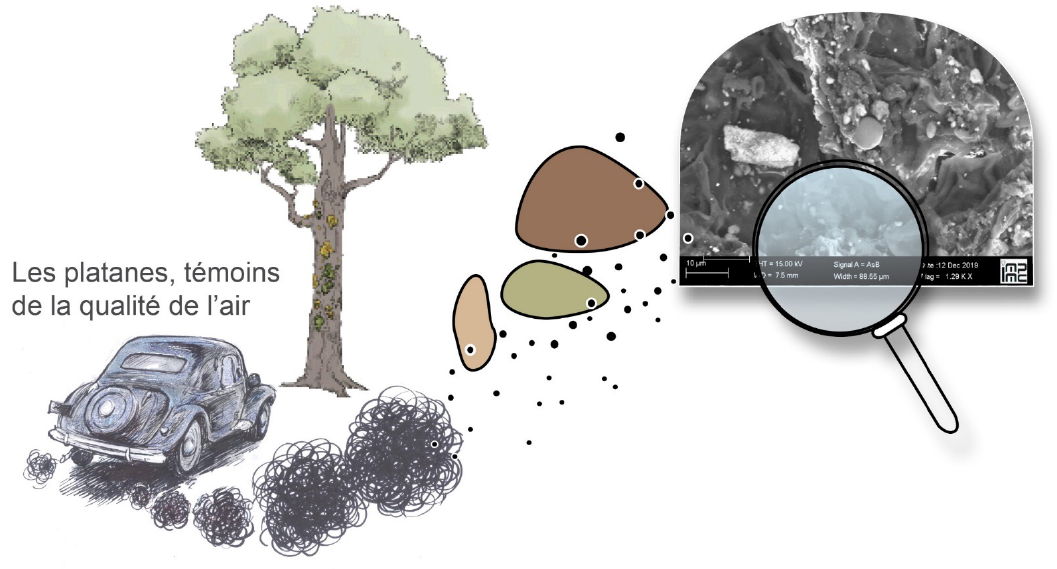
Protocole d'échantillonnage
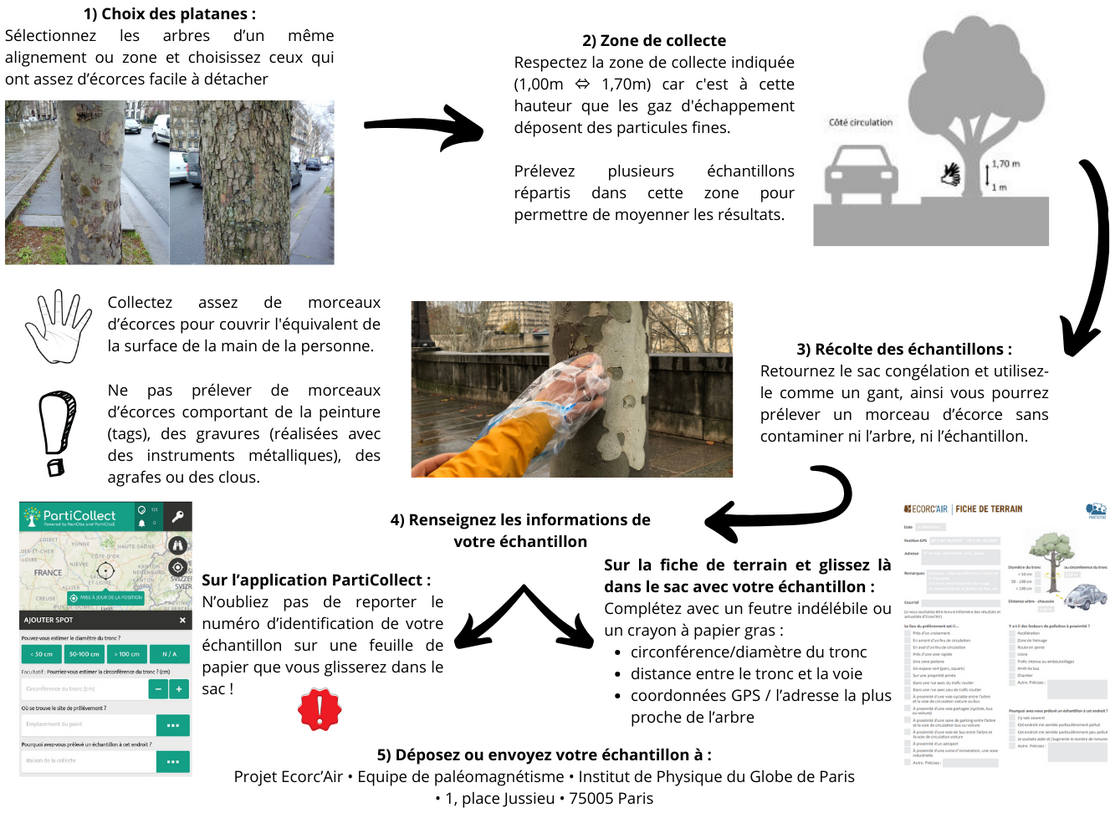
Exploring your world with Spotteron Apps in these current times is something, you can do safely. Not only is going out into the fresh air beneficial for your health, but it is also a chance to escape the current everyday routine of staying at home most of the time.
While spotting, you can easily keep your distance to others, and you can go out into the wild without being surrounded by other people on a close quarter. But you won't be alone! In the apps, you will find a community of people like you, with an adventurous spirit, who are interested in similar topics as you.
Please stay safe - always watch your steps and take care of others. Keep the physical distance and do not put yourself at risk. But also enjoy walking out into nature and discover new things with your SPOTTERON apps.
With your contributions to the apps, you not only help important projects by making observations, but you also share what you find out there with other like-minded people. Let's explore and discover your world together!

If you want to share your experiences with the current Covid-19 crisis, please check out his app:
Please visit the website about the SPOTTERON Platform on www.spotteron.net
This website uses no external trackers, no analytics, just session cookies and values your online privacy.

